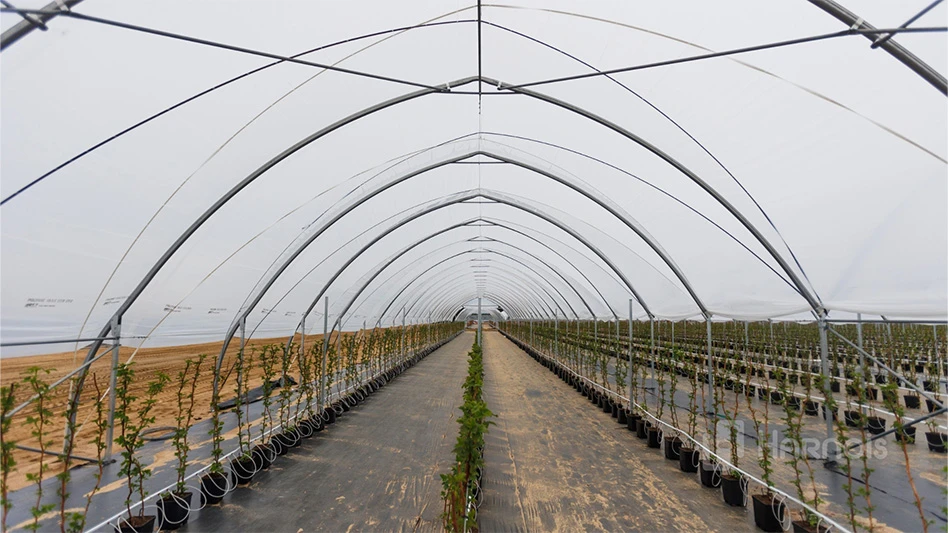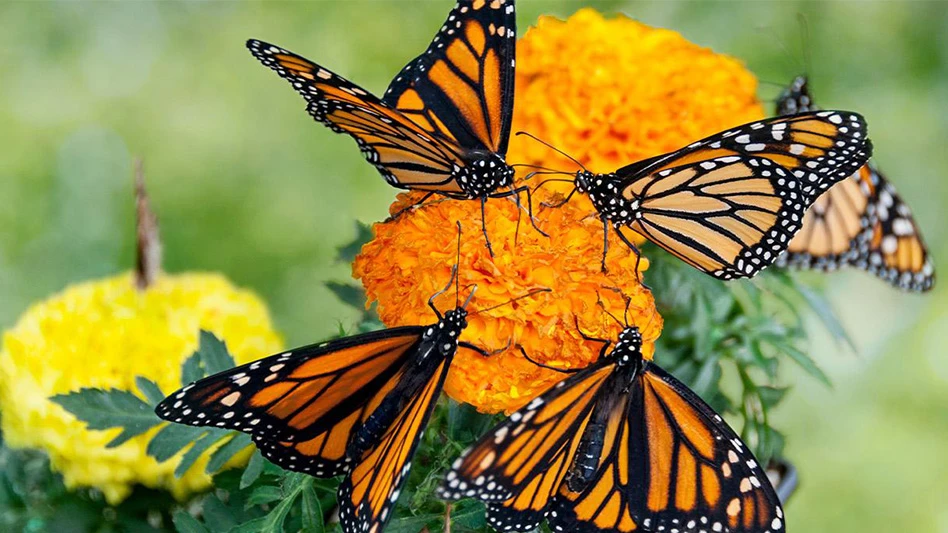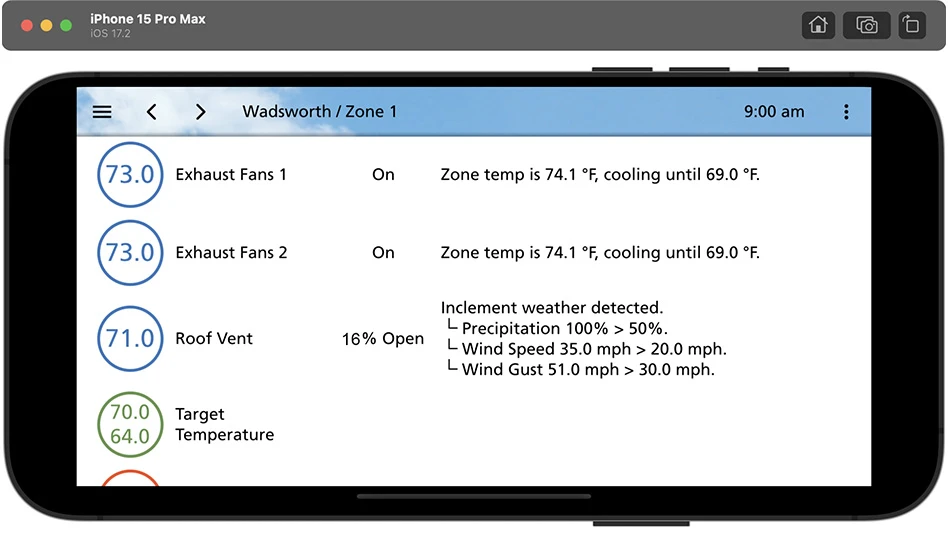Strobilurin fungicides were first introduced to the ornamental industry in 1998 when kresoxim methyl (Cygnus) was registered. Since then, four more active ingredients have been registered for use on ornamentals. Fluoxastrobin (Disarm O) has been the most recent strobilurin fungicide labeled for ornamentals.
The mode of action group for strobilurins is 11. Due to the rather narrow action of strobilurins, resistance is a major concern. Resistance to azoxystrobin developed before the product was labeled for use in some countries. This was due simply to the experimental testing of the fungicide that had to be done for labeling. Resistance has not been proven in any ornamental system that I am aware of, but it has clearly been shown in turf.
In a pre-emptive move the international plant protection chemical community established guidelines for labeling all strobilurin fungicides as well as others determined to be at high risk of resistance development. The Fungicide Resistance Action Committee (FRAC) meets regularly to reassess these guidelines and related topics.
 Powdery mildew on a gerbera flower.Range of efficacy
Powdery mildew on a gerbera flower.Range of efficacy
These fungicides are a good example of a range of efficacy based on whether or not the active ingredient is systemic and/or redistributes across the leaf surface once it is applied. Compass O and Cygnus each redistribute in the air while Heritage and Disarm O each have a high degree of systemic action in the xylem. The final active ingredient is pyraclostrobin, which is in Insignia and Pageant, and is not systemic and does not redistribute in the air. Pageant provides a broader spectrum of control with the addition of boscalid (mode-of-action group 7).
Another active ingredient with the same mode-of-action group (11) is fenamidone (FenStop), which has a reduced range of efficacy and is not a strobilurin. FenStop is labeled for downy mildew, Phytophthora and Pythium.
All of the strobilurins are labeled for spray applications with most also labeled for crown-directed sprays and drenches. The re-entry interval is 12 hours for all except Heritage which has a 4-hour re-entry interval. Some of these products are also labeled for chemigation. There is a special prohibition on the Heritage label against use in ultra low volume application equipment.
With many similarities on their labels, you may be wondering if you can substitute the fungicides in the same chemical class and obtain equal results. In some cases, the chemical properties of a particular active ingredient are distinct and give the product an advantage over others with the same mode-of-action. In other cases, fungicides with the same mode-of-action have proven similar in activity, at least against some target disease pathogens.
Diseases controlled
Target diseases for nearly all strobilurin fungicides include downy mildew, rust, powdery mildew and many leaf spots (Alternaria, Cercospora, Myrothecium and Sphaceloma, which causes scab on poinsettia). Heritage and Insignia also provide good to very good control of soil-borne diseases such as Fusarium, Cylindrocladium and Rhizoctonia stem and root rots, but not black root rot (Thielaviopsis).
The most consistent and effective control of rust is seen with Heritage. Be sure to use a wetting agent if pustules have formed or the fungicide may not penetrate the pustule and control will be minimal. This may be because Heritage has a better chance to penetrate the pustule. Rust infections, as well as downy mildew, start inside the leaf and may be hard to reach with a surface active product without systemic action.
Compass O has been somewhat more effective against Botrytis than other strobilurins. This may be due to Compass O redistributing across the leaf and Botrytis spores that constantly fall onto the leaves can be killed even when they land on a part of the leaf that was not originally sprayed.
 Rust on dianthus.Across the group of five strobilurins the most variable results were observed when they were tested against Colletotrichum, Coniothyrium, Phyllosticta, Phytophthora and Pythium. Colletotrichum, Coniothyrium and Phyllosticta fall into the anthracnose-dieback group of diseases, which can be very hard to control.
Rust on dianthus.Across the group of five strobilurins the most variable results were observed when they were tested against Colletotrichum, Coniothyrium, Phyllosticta, Phytophthora and Pythium. Colletotrichum, Coniothyrium and Phyllosticta fall into the anthracnose-dieback group of diseases, which can be very hard to control.
It can be difficult to obtain a good fungicide trial for Phytophthora and Pythium diseases. With Phytophthora, results can vary widely within the same trial with some plants dying while others that have received the same treatment being unaffected. This makes statistical analysis difficult.
Pythium is especially hard to evaluate. Sometimes it can be difficult to determine if the root loss was caused by Pythium or by fungicide phytotoxicity.
We do not have complete information for each strobilurin on each disease. Consider using one of the strobilurins in a rotational program for any of the color highlighted diseases in Table 2. These products have been tested over the past 10-12 years on a wide range of plants under greenhouse and field conditions. Overall these products have been very safe. Their labels do prohibit use on specific plants so be sure to read the labels carefully.
Real world application
Our diagnostic lab recently received a sample of cucumbers infected with downy mildew. The grower had been rotating three different strobilurins and failed to control the disease resulting in a huge loss of yield (perhaps due to resistance development). Be sure to read and heed product labels to make sure that you are rotating between mode-of-action groups.
Strobilurin fungicides are not the answer to all disease issues despite their broad-spectrum activity. They are also not interchangeable, although clearly similar results may be obtained with several of them against a particular disease.
If you want to simplify fungicide inventory, consider keeping one strobilurin with systemic or soil-borne activity and one that is best for foliar diseases. Be sure to follow label directions and check rates of use since these fungicides do not contain equal amounts of active ingredient per unit volume. Comparing use rates and relative efficacy is the only way to determine the most cost effective fungicide for your situation.

A.R. Chase is president, Chase Horticultural Research Inc., (530) 620-1624; www.chasehorticulturalresearch.com.

Explore the January 2010 Issue
Check out more from this issue and find your next story to read.
Latest from Greenhouse Management
- Star Roses and Plants introduces Martha Stewart Rose
- Hoffman Nursery announces David Hoffman as CEO, Craig Reynolds as COO
- Plantpeddler releases Poinsettia Variety Day 2024 results
- Sarisa insecticide now registered for drench applications and many common greenhouse vegetable crops
- Ball FloraPlant launches redesigned website
- Costa Farms wins Top 10 Marketing Team at 2024 OnCon Icon Awards
- Thank you(!)
- Construction begins at Dramm’s Fish Fertilizer Facility in Wisconsin





